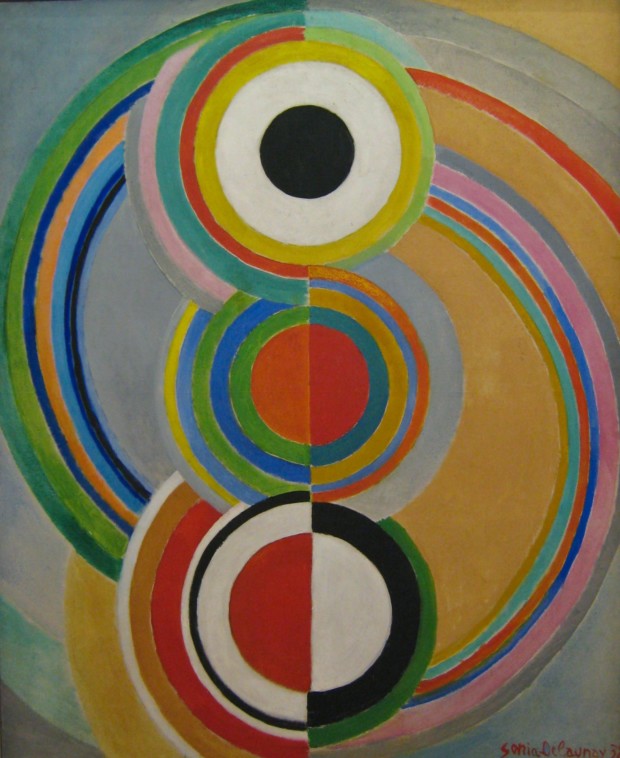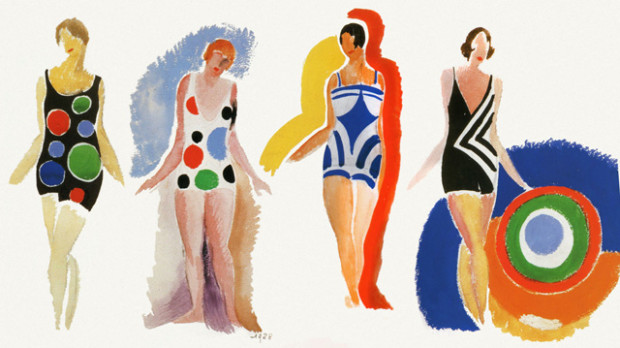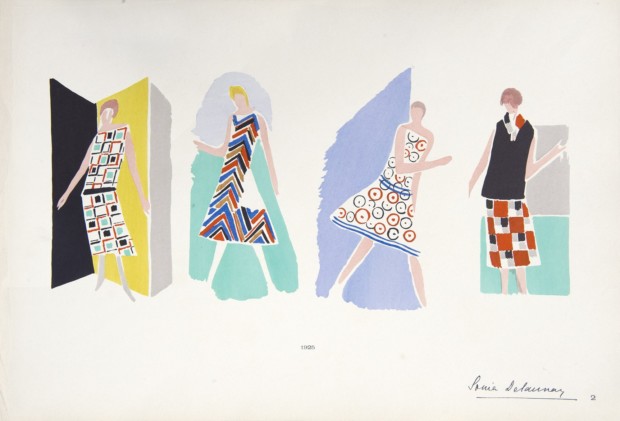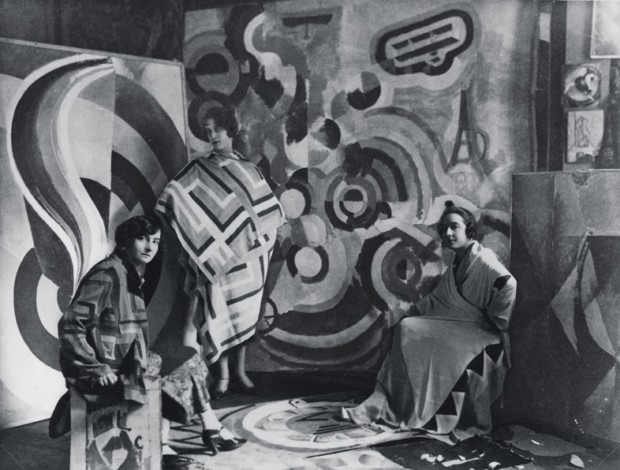Thierry Mugler’s Art of Fashion: Avant-Garde and Iconic
Thierry Mugler’s art redefined the boundaries of fashion, blending creativity, drama, and innovation. His bold silhouettes and futuristic...
Errika Gerakiti 30 December 2024
Sonia Delaunay (1885-1979) was a busy woman. She was an officer of the French Legion of Honor, a wife of a famous painter, and an artist herself. On top of everything, she was also a fashion designer! Her endeavors were appreciated: she became the first living woman to have a retrospective exhibition in the Louvre.
A movement called Orphism, or Orphic Cubism, was co-founded by Sonia and Robert Delaunay together with other artists. It focused on pure abstraction and bright colors.
Most people would associate this type of work with her:

But she was also a fashion designer, as you can see below:

In a lecture she gave in 1927 at the Sorbonne she openly condemned the earlier fashions:
At the present time, fashion is passing through a critical stage which corresponds to a period of revolution. Sometime before World War I, it began to free itself from academic couture: it got rid of the corset, the high collar, and all those elements of women’s dress demanded by the aesthetic of fashion but which were contrary to hygiene and the freedom of movement.
She offered her own vision of new clothing for modern women. She also designed costumes for ballets and famous actresses, such as Gloria Swanson.

Her husband, Robert Delaunay, said about her: “Until now, fabrics were dealt with the same way as wallpaper, by the kilometer, with no conception of their future use – or at best by chance. That was up to the dress designer…(…) She gives her conception a perfect creative harmony, by thinking about all the transitions between the ready-made fabric and the final garment.”

Delaunay complained in one of the letters in 1968: “All [my] works were made for women, and all were constructed in relation to the body. They were not copies of paintings transposed onto women’s bodies, as one couturier has done with Mondrian and Pop Art […] I find all that completely ridiculous. It’s a promotional medium, but it isn’t a basis for either development or construction: it’s a circus.”

Chris Dercon, the last director of Tate Modern asserted: “Delaunay has been less recognized for her contribution to the history of modern art and abstraction than she deserves, marginalized by an account of the history of art that has prioritized male artists and, at times, positioned her work as decorative.”
DailyArt Magazine needs your support. Every contribution, however big or small, is very valuable for our future. Thanks to it, we will be able to sustain and grow the Magazine. Thank you for your help!